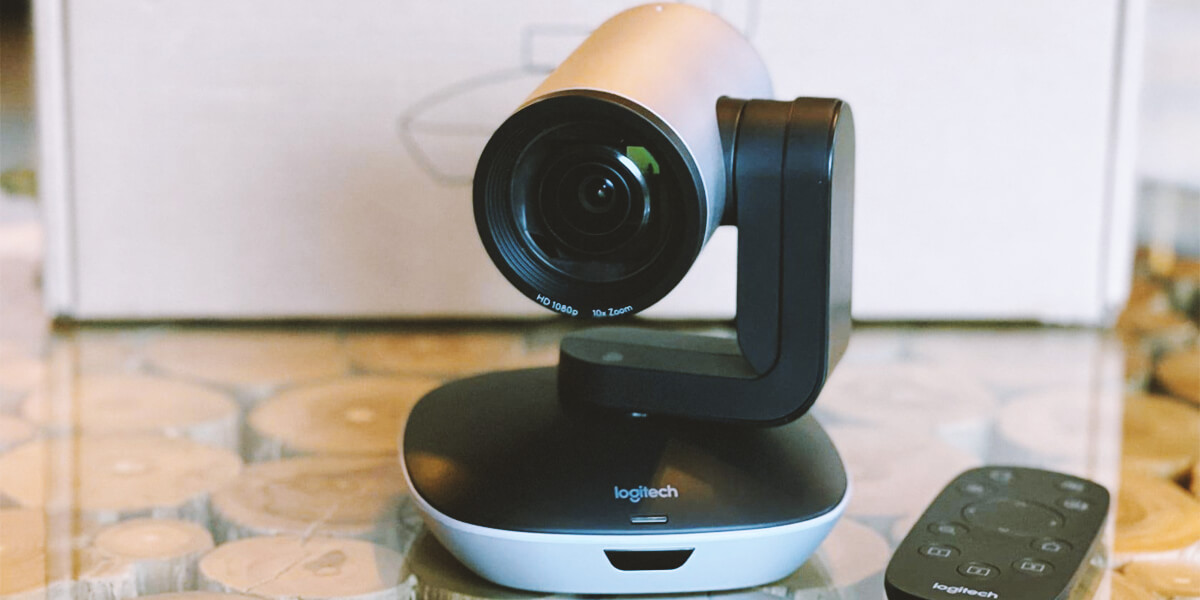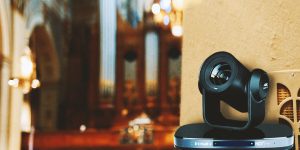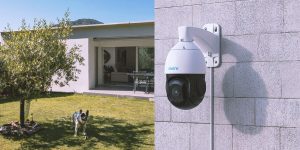Pan-tilt-zoom, or PTZ, cameras are noted for remote control of their pan, tilt, and zoom functions. Also, they enable close-up shots or wider views as they can zoom in and out without physically moving the camera. Finally, PTZ cameras have advanced features such as image stabilization and autofocus, which can result in higher-quality video footage. As you see, there are many advantages to one pack, right? But how do you select the best PTZ cameras to serve your needs? I will ponder upon this in my review.
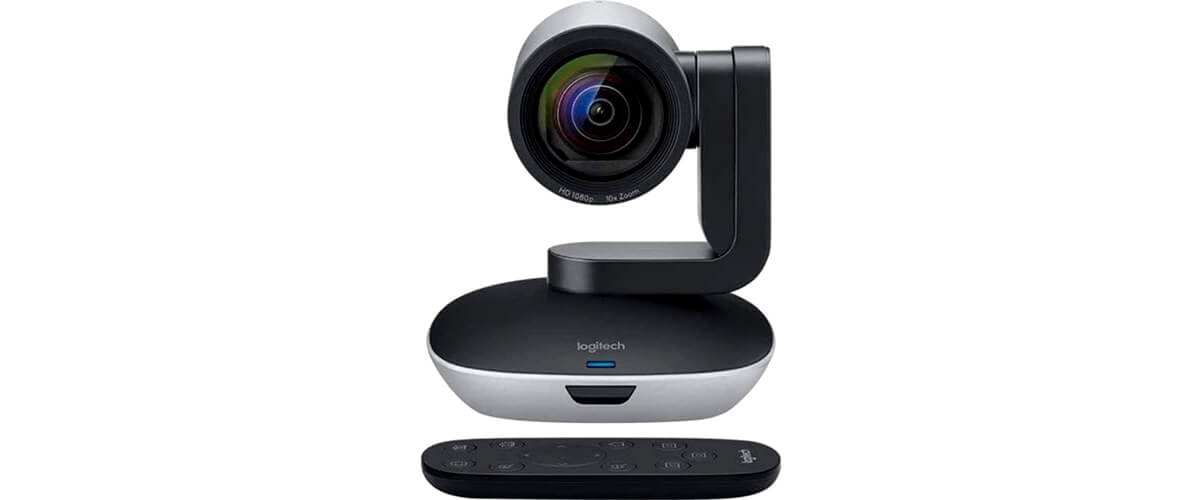
PTZ cameras comparison table
| Name | Video capture resolution | Pan | Tilt, up/down | Zoom, optical/digital | Review |
|---|---|---|---|---|---|
| Logitech PTZ PRO 2 best overall | 1920×1080, 30fps | 260° | 35°/45° | -/10x | Review |
| Canon CR N300 ptz camera for live streaming | 3840×2160, 30fps/1920×1080, 60fps | 170° | 30°/100° | 20x/20x | Review |
| OBSBOT Tiny PTZ 4k mini ptz camera | 3840×2160, 30fps/1920×1080, 60fps | 150° | 45°/45° | -/4x | Review |
What are the uses of PTZ cameras?
PTZ cameras have a wide range of uses across different industries. They make the best PTZ home security cameras and are also commonly used in security systems to monitor large areas, such as parking lots, malls, airports, and public spaces. They can be programmed to automatically track suspicious activity and zoom in on specific areas.
Additionally, if you need a camera for video conferencing, a PTZ camera is a good fit for this use. You may want to install it for remote meetings, webinars, and online classes. Classrooms and lecture halls may also be equipped with these cameras to record lectures and presentations. PTZ cameras are used in live events, such as concerts, sports events, and conferences.
Features to consider when buying the best PTZ camera
Resolution
Whether you need an SD or 4k PTZ camera, the market is abundant with both offers. Naturally, a camera with a higher resolution will deliver a sharper image with more detail.
I also recommend considering the fps parameter. Higher fps can generally provide smoother and more detailed video footage, especially for fast-moving objects or environments with a lot of motion. A frame rate of 30 fps is a standard for surveillance applications. At the same time, 60 fps is often recommended for video conferencing and broadcasting.
Video compression helps reduce the size of video files, making it easier to store and transmit video footage over networks. PTZ cameras use different video compression formats, including H.264, H.265, and MJPEG. H.265, also known as HEVC (High-Efficiency Video Coding), is a newer, more efficient compression format that can achieve higher compression ratios while maintaining high video quality.
Image stabilization
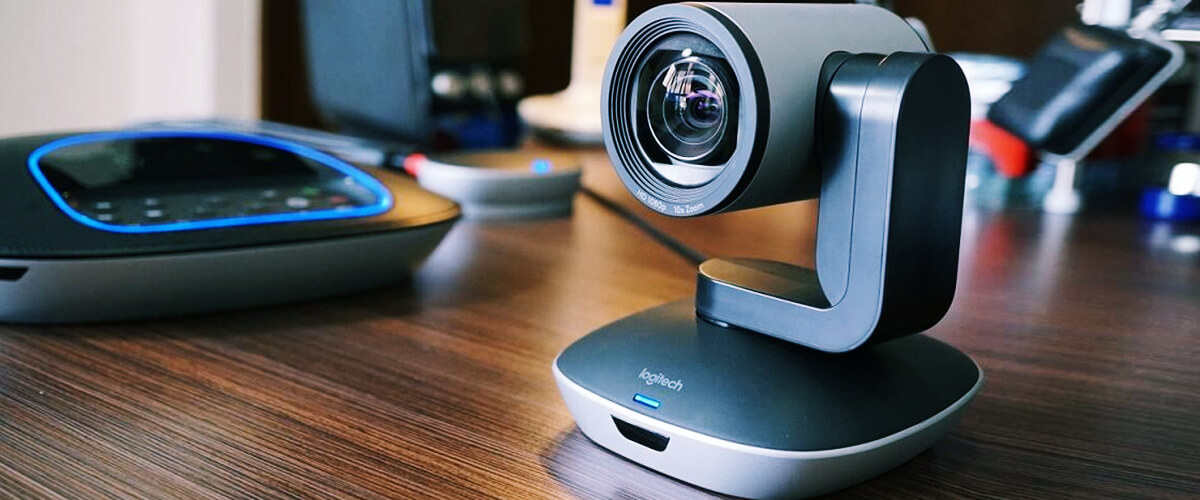
Optical, electronic, and digital image stabilization are three different techniques used in PTZ cameras to reduce image blur caused by camera shake or movement.
Optical image stabilization (OIS) can be highly effective in reducing camera shake. The main advantage of OIS is that it can produce high-quality, stabilized images without degrading image quality. However, OIS is more expensive and may add weight and complexity to the camera.
Electronic image stabilization (EIS) uses software algorithms to compensate for the camera shake. EIS is less costly, but it can result in a loss of image quality and a narrower field of view due to cropping.
Digital image stabilization (DIS) is a simpler form of EIS. This technology works by analyzing the video frames and using software to smooth out any camera shake. However, DIS cuts the image quality and can be less effective than OIS or EIS.
You may find the combination of EIS and OIS in some cameras for effective image stabilization.
Sensor size
The sensor in a PTZ camera is the component that captures the image and converts it into an electrical signal for processing. The following sensor sizes are available:
- 1/4-inch: Less expensive and requires less power than larger sensors. Has lower image quality, with less resolution and sensitivity to light.
- 1/3-inch: Boasts better image quality with higher resolution and better sensitivity to light than 1/4-inch.
- 1/2.7-inch: Delivers better resolution and finer sensitivity to light than 1/3-inch. It may also have better noise performance.
- 1/2-inch: This is a larger sensor size that is typically found in higher-end PTZ cameras.
- 1-inch or larger: Provides the highest image quality with the highest resolution and sensitivity to light.
It should be understood that larger sensors typically produce better image quality by capturing more light and providing higher-resolution images.
Zoom
Zoom is an essential feature of PTZ cameras. It is particularly important in surveillance and security applications, where the camera should be able to focus on specific details such as a person’s face. In addition, during video conferencing, broadcasting, and live events, it allows for providing a more dynamic and engaging visual experience.
PTZ cameras can zoom in and out of a scene, either optically or digitally.
With optical zoom, the camera lens is physically moving to change the magnification and field of view, resulting in higher image quality and clarity.
Digital zoom, on the other hand, crops and enlarges the image digitally. As a result, this can lead to a loss of image quality and resolution.
The zoom range is also a critical parameter in the PTZ camera. It stands for the difference in magnification from one end of the zoom range to the other. A wider zoom range will provide you with better flexibility and the necessary level of detail.
Controller types
PTZ camera controllers are devices used to control the camera remotely. These controllers allow the user to adjust the camera’s angle, tilt, and zoom without physically moving or adjusting the camera itself.
There are different controller types:
- Manual controllers are small devices that often have buttons or touchpads to adjust the camera’s setup.
- Joystick controllers are larger, more robust devices that resemble a game controller and have multiple dials to control camera movements.
- Software controllers allow the user to control the camera using a computer or mobile device. These controllers often provide additional features, such as the ability to save presets or record video directly from the controller’s interface.
Some PTZ cameras may come with a controller. In other cases, you will have to buy one. When you purchase the controller, it is important to ensure it is compatible with your PTZ camera model, as different cameras may use different communication protocols or require specific controller types.
Best PTZ camera reviews
Logitech PTZ PRO 2 – best overall

Logitech PTZ PRO 2 is a great option that handles not only basic tasks well but also has a number of advanced features that may rivet your attention. Let’s look at the most prominent ones.
It is an HD 1080p video camera with sharp image resolution, great color reproduction, and optical accuracy. It boasts 30 fps that delivers smooth and detailed video footage. H.264 image stabilization technology preserves high video quality while being efficient in terms of storage.

This camera can be remotely controlled to pan and tilt, providing a 260-degree range of motion. Logitech PTZ PRO 2 also features a 10x optical zoom lens for excellent clarity and sharpness, even when zoomed in. Zoom is where this device excels Canon CR N300. I also like autofocus and auto-exposure capabilities, ensuring the video image is always clear and well-lit.
An example on the screen of Logitech PTZ PRO 2 image quality

When used for streaming, you may encounter a minor issue with this camera. As it goes to sleep and I re-enable the video, the camera will be looking at the floor. So, I need to use a remote to point it back to my face.
Overall, Logitech PTZ PRO 2 is the best PTZ camera system. Its advanced optics and pan-tilt-zoom capabilities make it a reliable and versatile choice for a range of different settings.
Key specs
- Video capture resolution: 1920×1080, 30fps.
- Pan: 260°.
- Tilt, up/down: 35°/45°.
- Zoom, optical/digital: -/10x.
- Connectivity: USB, IR, DC IN.
Pros
- Supports HD 1080p resolution with 30 fps.
- Efficient H.264 compression technology for wise storage use.
- 10x HD zoom delivers footage clarity.
Cons
- Minor issue after bringing the camera back from the sleep mode.
Canon CR N300 – best ptz camera for live streaming

Are you a streamer? Consider the Canon CR N300. It supports multiple professional interfaces like PoE+, RTSP/RTP, and RTMP/RTMPS to conveniently stream audio and video to social sites such as Facebook Live and YouTube. That’s what makes it superior to the Logitech PTZ PRO 2 camera.
One of the standout features of the Canon CR N300 is its 20x optical zoom lens, which provides clear and detailed images even when zoomed in. Its 1/2.3-inch CMOS sensor captures video at up to 60 fps. Still, compared to the higher-end CR-N500 model, it’s a smaller lens (compared to 1 inch), resulting in a less-flattering bokeh effect. Yet, you can expect nothing but high image quality in this device with its 4K UHD resolutions.
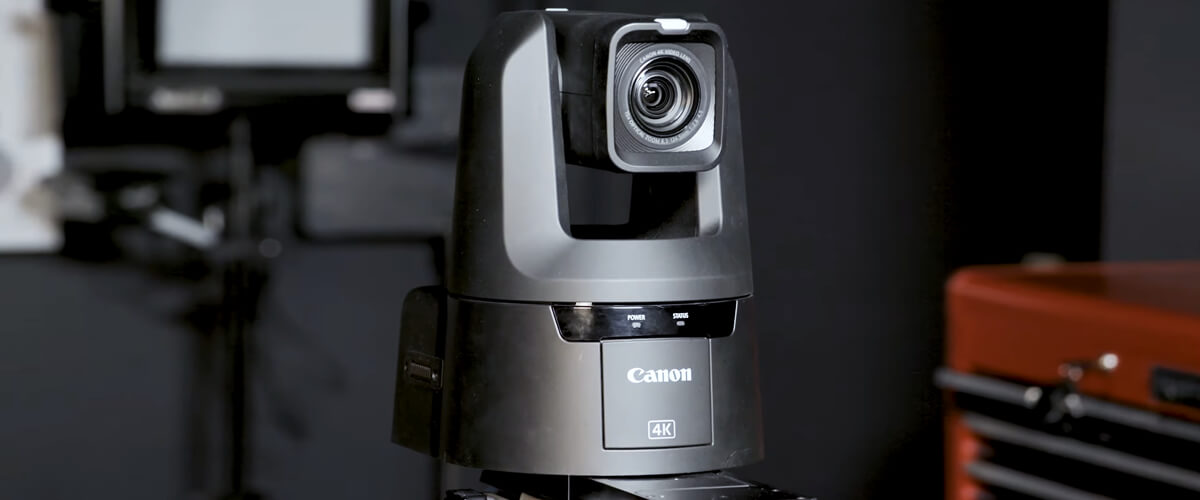
The Canon CR N300 also offers advanced optical image stabilization technology, which helps reduce camera shake and ensure a clear, steady image.
An example on the screen of Canon CR N300 image quality
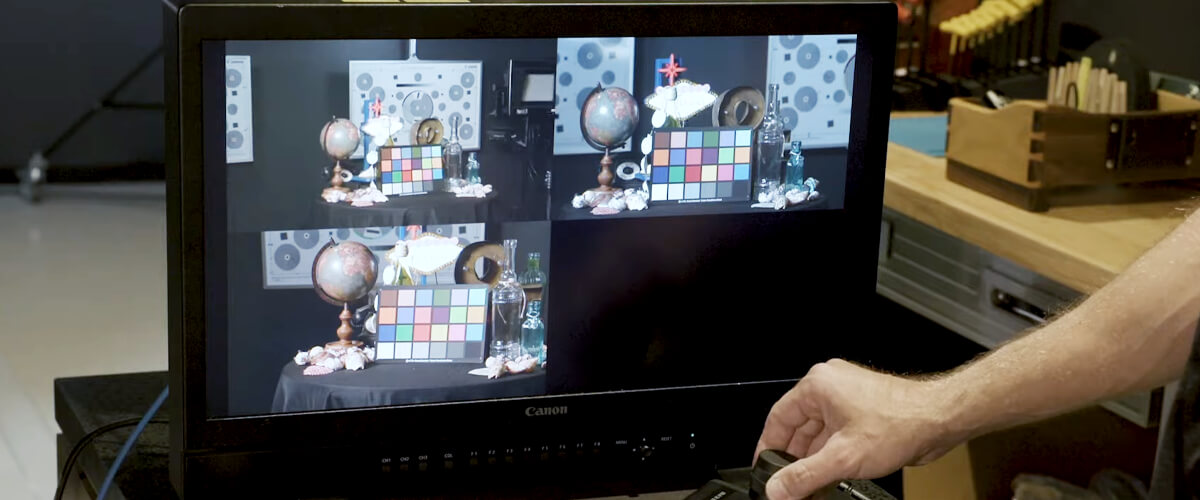
What I also like about this wireless PTZ camera is that it can be easily controlled remotely by IP, Serial, IR, or wirelessly via Wi-Fi. Though it only supports HDMI and LAN connections, which may be limiting if you require more flexibility in terms of connectivity.
If you are on the hunt for the best PTZ camera for live streaming, look no further than Canon CR N300. It will help you create high-definition full HD video content without any hassle.
Key specs
- Video capture resolution: 3840×2160, 30fps/1920×1080, 60fps.
- Pan: 170°.
- Tilt, up/down: 30°/100°.
- Zoom, optical/digital: 20x/20x.
- Field of view, horizontal/vertical: 65.6°-3.6/39.8°-2°.
- Connectivity: 3G-SDI, HDMI, Wi-Fi, IR, RJ45, RS-422, Mic, USB, USB-C, DC IN.
Pros
- Enables to produce detailed UHD video in 4K resolution.
- Advanced zoom capabilities and image stabilization technology for a good image.
- Multiple control options make it convenient.
Cons
- You may want to have a more distinctive bokeh effect for streaming applications.
OBSBOT Tiny PTZ 4k – best mini ptz camera
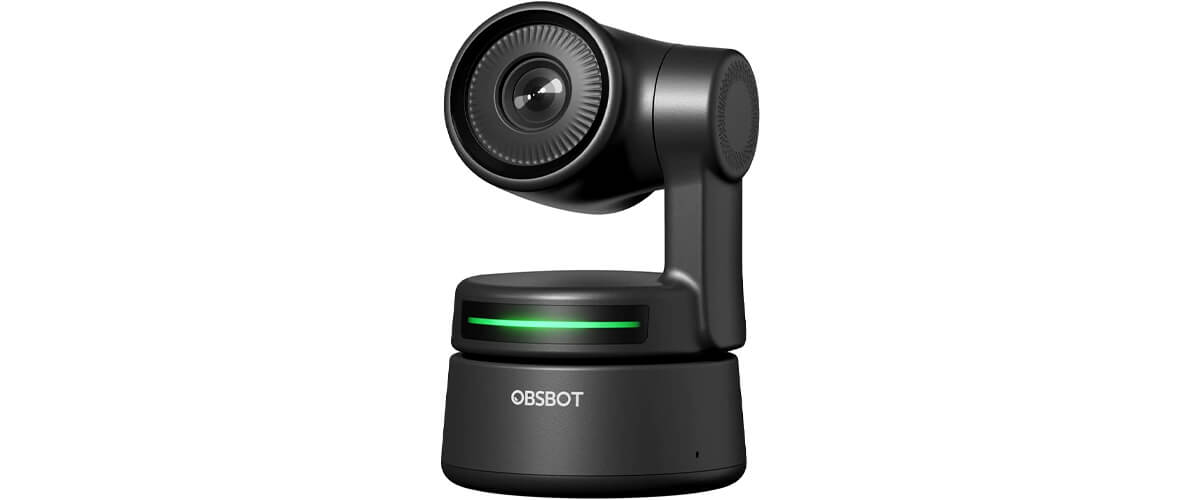
The OBSBOT Tiny PTZ 4k is a worthy PTZ camera that offers exceptional performance in a compact package.
What’s so special about it, and what sets it apart from HuddleCamHD HC3X-BK-G2? That’s an AI chip that can track and follow subjects with exceptional accuracy. This feature makes it good for vlogging, live streaming, and video conferencing.
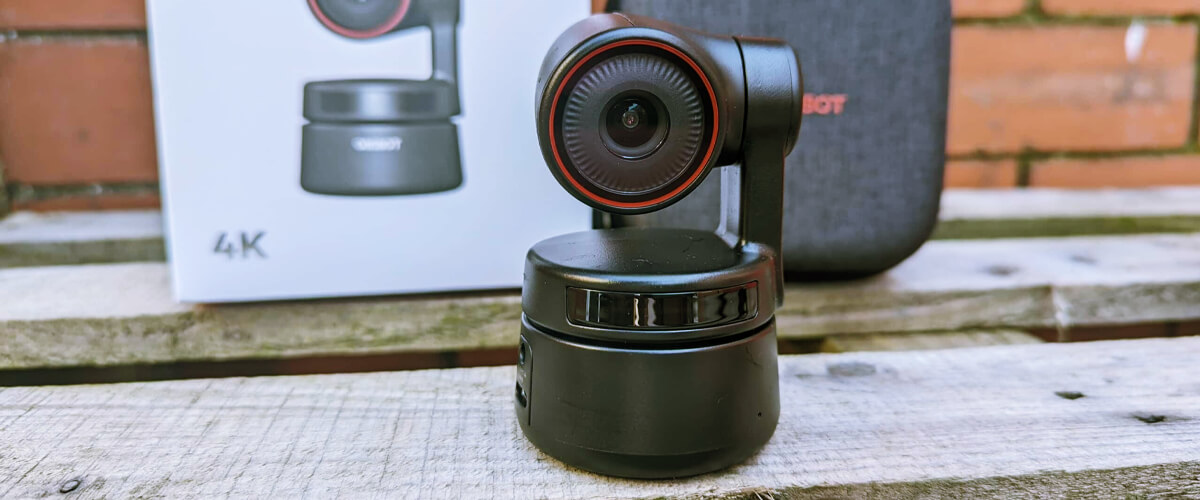
The camera also features a ½.8 inch sensor and a 60 fps frame rate, which allows it to capture clear, detailed full HD 1080p and 4K images with smooth motion. Add HDR through an app to neatly display every bit of view in any light, and you get all you need for creating decent content. The 4x digital zoom lens also provides excellent zoom capabilities, allowing users to capture close-up shots easily.
Another amazing feature of the OBSBOT Tiny PTZ 4k webcam is gesture control. Easily zoom in and out, accept and cancel calls remotely using simple gestures. You can also use software to access advanced features. Though, it is a bit buggy and clunky.
An example on the screen of OBSBOT Tiny PTZ 4k image quality
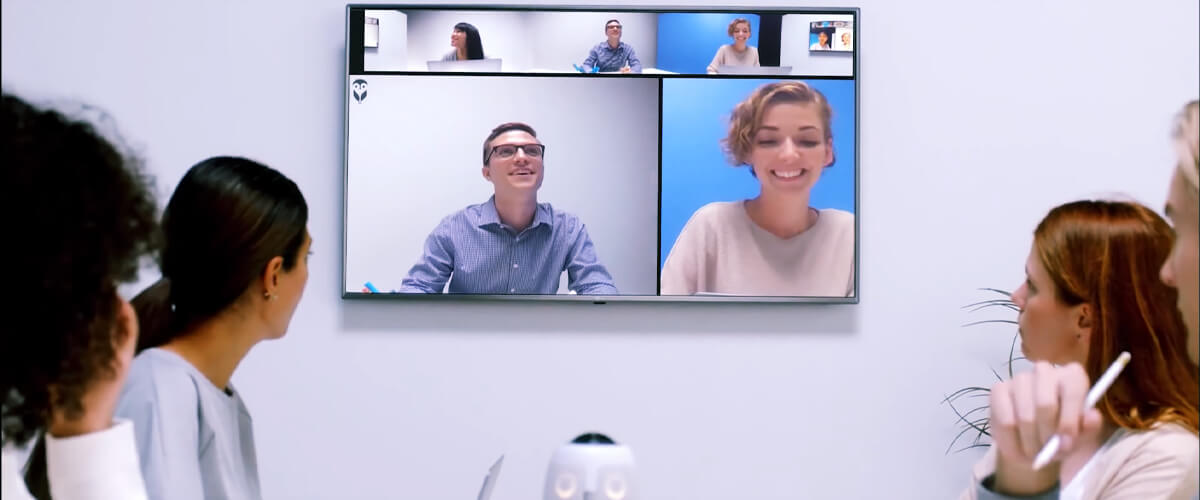
As you turn the camera to sleep, sometimes it requires you to unplug the camera to work properly, which I find inconvenient.
All in all, OBSBOT Tiny PTZ 4k is the best mini PTZ camera. Its AI technology, high-quality sensor, and zoom capabilities make it ideal for a wide range of applications.
Key specs
- Video capture resolution: 3840×2160, 30fps/1920×1080, 60fps.
- Pan: 150°.
- Tilt, up/down: 45°/45°.
- Zoom, optical/digital: -/4x.
- Connectivity: USB-C, DC IN.
Pros
- AI technology for great accuracy.
- 1/2.8 inch sensor and 60 fps frame rate for capturing even fast-paced actions.
- 4x digital zoom lens delivers quality close-up shots.
Cons
- The software gets buggy sometimes.
- You may need to unplug the camera when setting the camera to work from the sleep mode.
HuddleCamHD HC3X-BK-G2

The HuddleCamHD HC3X-BK-G2 camera will help you make an impression during video conferences with a clear image. And it’s a really good product that’s worth looking at in more detail.

With a 1/2.8 inch CMOS sensor, the camera delivers high-quality images and video in 1920x1080p resolution and 30 fps with accurate color reproduction and excellent low-light performance. The camera features a 3x optical zoom lens, which is not as good as in OBSBOT Tiny PTZ 4k, but it is also of a fairly high level. Also, it has an 81-degree field of view in a wide zoom conference camera mode and 36 degrees in Tele zoom. Surprisingly, this camera doesn’t accept bright lighting well, so I recommend using it in subdued lighting. I was a little disappointed by this circumstance.
An example of HuddleCamHD HC3X-BK-G2 image quality

The HuddleCamHD HC3X-BK-G2 camera features advanced control options, including an IR remote, web interface, and a built-in joystick, allowing easy and intuitive control. It also offers a range of connectivity options, including HDMI, USB 2.0, and RS-232, which makes it easy to connect to a variety of devices and platforms.
Generally, HC3X-BK-G2 is a good USB PTZ camera. Its advanced sensor and connectivity options make it a good choice for video conferencing, webcasting, and other similar events. At the same time, its intuitive control options make it easy to use.
Key specs
- Video capture resolution: 1920×1080, 30fps.
- Pan: 359°.
- Tilt, up/down: 90°/45°.
- Zoom, optical/digital: 3x/-.
- Field of view, horizontal/vertical: 91°/36°.
- Connectivity: USB, IR, RS-232/485, DC IN.
Pros
- 1/2.8 inch CMOS sensor delivers high-quality images in 1080p with 30 fps.
- A wide view field, enough to cover video conferencing needs.
- Easy to use thanks to multiple control options.
Cons
- Zoom capabilities are somewhat limited.
- Delivers a washed-out image in a light environment.
PTZOptics 20x sdi
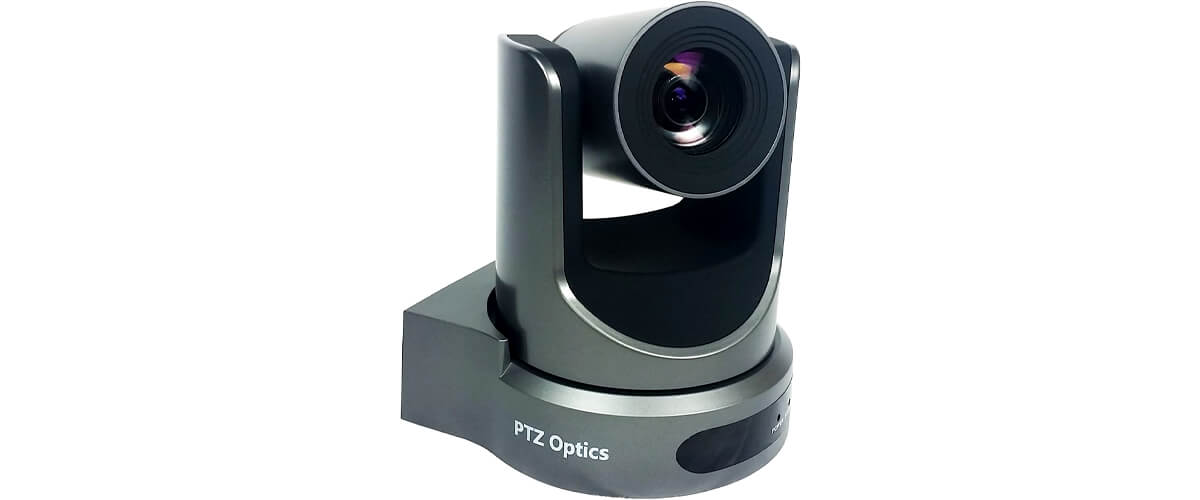
Meet PTZOptics 20x SDI, an SDI-standard camera widely used in the broadcast industry to transmit uncompressed, unencrypted digital video signals.
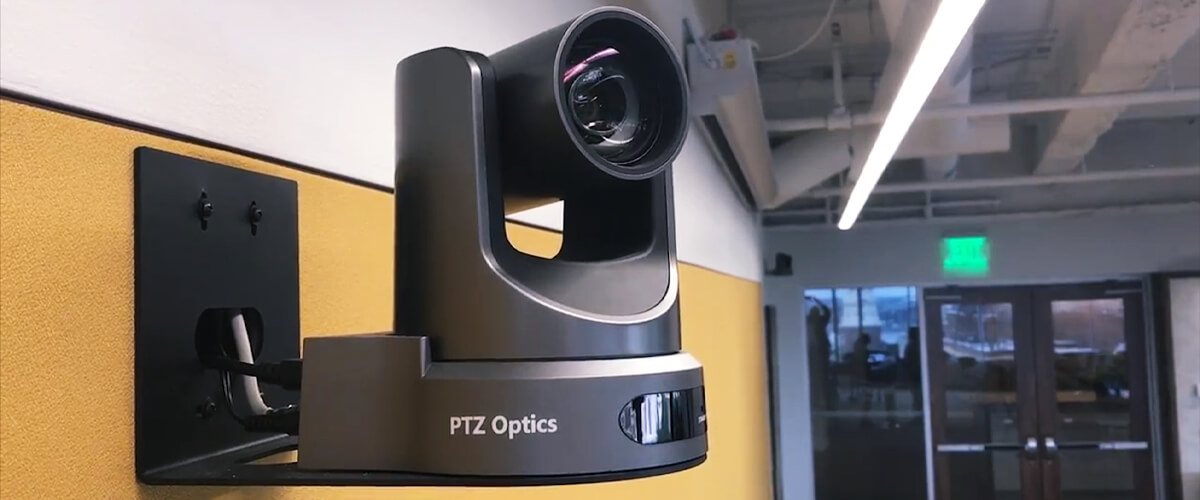
This indoor PTZ camera has a 1/2.7-inch CMOS sensor, delivering clear and vivid 1920x1080p images with 60 fps, accurate colors, and excellent low-light performance. The camera also features powerful 20x optical and 16x digital zoom lenses, which smoothly zoom in for a clear image even from a distance. Being beefed up with H.264, H.265, and MJPEG encoding, you can expect a high level of video compression without losing quality. Compared to HuddleCamHD HC3X-BK-G2, it works better in a well-lit room. The image quality is also fine in dark environments.
An example on the screen of PTZOptics 20x sdi image quality
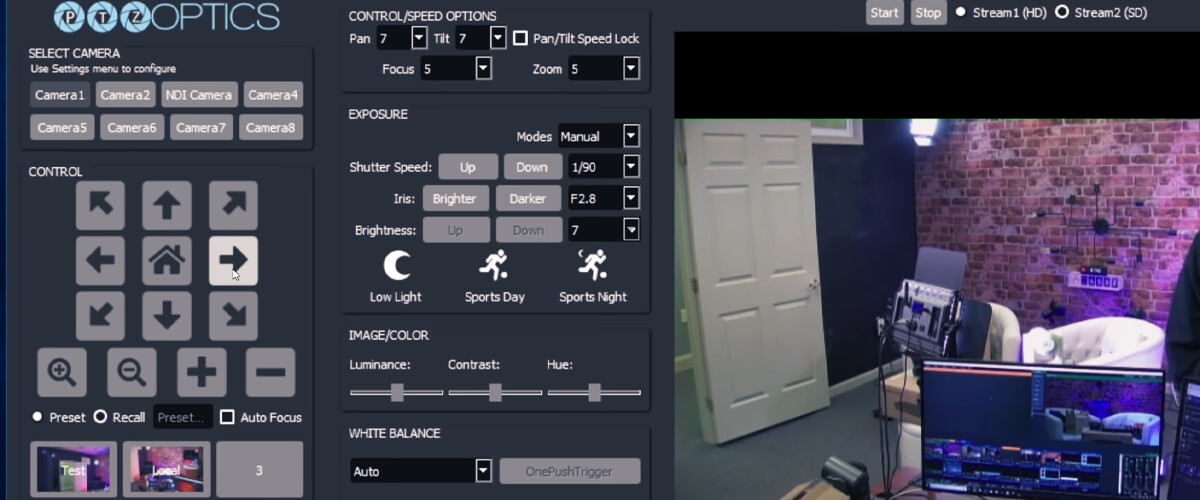
The camera supports a range of video formats, including SDI, HDMI, and IP streaming, which makes it easy to integrate it with a variety of devices and platforms. Additionally, its intuitive control options, which include a built-in joystick, IR remote, and advanced control software, make it easy to control the camera, adjust settings, and capture the perfect shot. However, I find that it is hard to set up. Another missing thing is the lack of image settings in the software interface; only IR remote can adjust it.
Anyway, the PTZOptics 20x SDI camera offers exceptional performance, making it worth the investment for those looking for the finest possible quality and versatility.
Key specs
- Video capture resolution: 1920×1080, 60fps/1280×720, 120fps.
- Pan: 170°.
- Tilt, up/down: 90°/30°.
- Zoom, optical/digital: 30x/16x.
- Connectivity: 3G-SDI, HDMI, IP, PoE, RS485, CVBS, USB, DC IN.
Pros
- 1/2.7-inch CMOS sensor produces 1920x1080p image with up to 60 fps.
- Zoom works efficiently even from a distance.
- Video encoding that saves space and preserves high video quality.
Cons
- May be hard to set up.
- Image adjustment settings are missing in the software interface.
FAQ
What are the benefits of using a PTZ camera over a fixed camera?
Because PTZ cameras can be adjusted to capture different angles and areas, they can help reduce blind spots that may occur with fixed cameras. That is why they can be an effective tool for surveillance and security applications, allowing for detailed monitoring and recording of activity within a scene.
